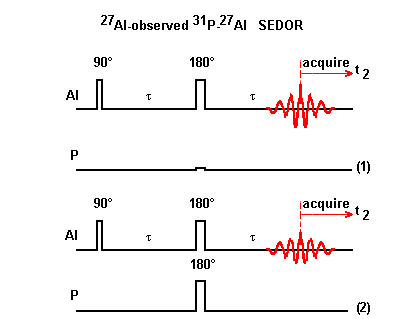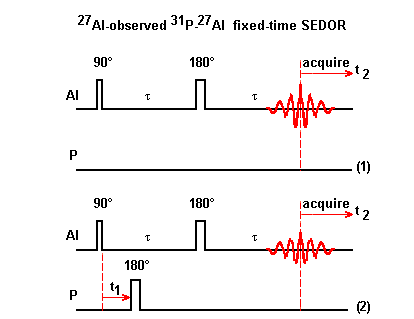Spin Echo DOble Resonance
Hahn and coworkers proposed the SEDOR sequence, which is a static experiment. It allows us to check the connectivities between adjacent nuclei and to determine their interatomic distances. Here, the heteronuclear dipole coupling does not dependent on time.
The SEDOR experiment is performed with the Hahn echo sequence on 27Al and the dephasing pulse on 31P. Both 180° pulses are applied at the same time. The delay tau designates the defocusing and refocusing time. The selective 90° and 180° pulses on 27Al excite only the central transition. In other words, 27Al can be treated as a pseudo spin-1/2 nucleus.
Sequences of Schemes (1) and (2) are performed for each tau.

The following version of SEDOR, called fixed time SEDOR, is preferred.
The duration t1, between the selective 90° pulse of 27Al and the 180° pulse of 31P, is increased form zero to tau during the experiment. The delay tau is held fixed. Therefore, sequence of Scheme (1) is performed only once, reducing the total experiment duration.
Due to a fixed time tau, only the effect of the coupled nucleus, 31P, is observed and not the time evolution of spin-spin relaxation of the observed nucleus, 27Al.

Usually, the SEDOR fraction f(t1), defined by
f(t1) = [signal from Scheme (1) - signal from
Scheme (2)]/signal from Scheme (1),
f(t1) = [Secho -
S(t1)]/Secho,
is plotted versus t1. The interatomic distance is
extracted by fitting these data with a theoretical curve.
